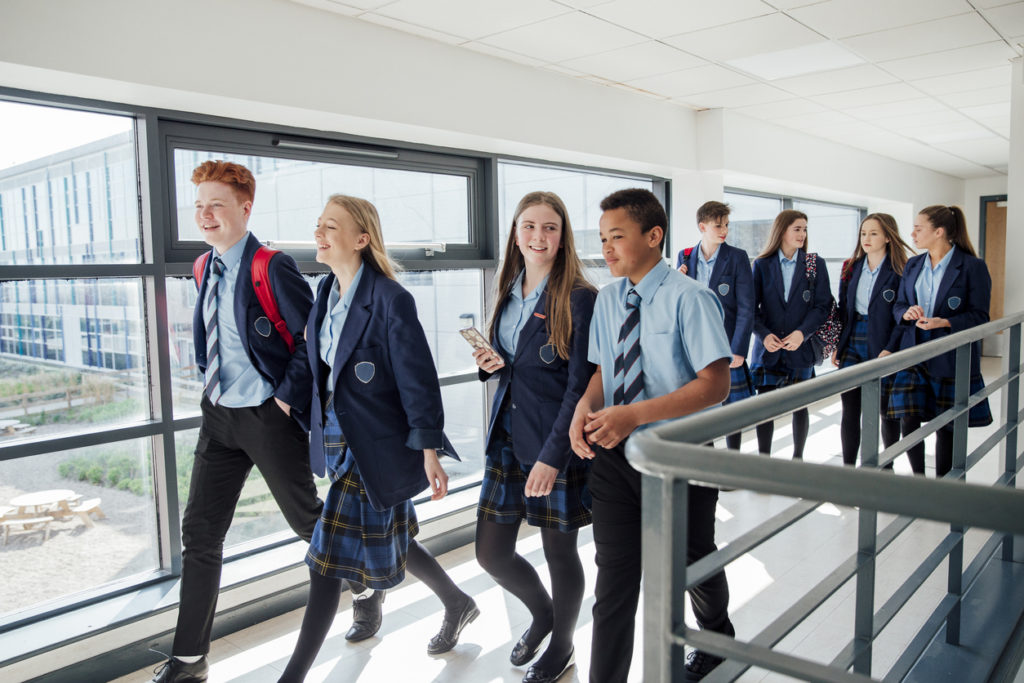The Government has announced £500million in new energy efficiency funding to support schools through this winter’s energy crisis. While a positive step, the immediate question is how quickly will schools be able to use this support?
For most, if not all schools, this announcement comes too late in the year to implement real change in their energy efficiency measures and, even later for those changes to begin to impact their bills heading into the dark, cold winter months. Which leads to a further question – how should headteachers and school directors begin to tackle energy efficiency improvements in the first place?
This is the key issue for most schools in the UK, which on average waste 30% of their total energy use while they are not even open.
Helping schools deliver an energy action plan
While Government funding is appreciated, even if long overdue, it doesn’t give schools the ability to make effective change to their energy use – to reach the point of being able to focus expenditure where it really makes a difference, the government recognises that schools still need further guidance on how to deliver energy efficiency.
In the last 12 months, eEnergy has helped 179 schools deliver energy action plans that will see them save a combined £25.6million over the next ten years, an average of £143,000 per school. To help schools deliver rapid change to their energy bills and to reduce their overall carbon footprints, we provide expert guidance through a four-step process to a more efficient approach to energy.

1) Measuring energy use:
The first step for schools is to understand their energy usage. Without understanding where, when, and how energy is being consumed it is impossible to identify the best path to energy efficiency. Through MY ZeERO, our energy measurement platform that allows business to understand when, where and how they consume energy in real time, eEnergy helps schools save on average 30% on their energy usage.
This could be by identifying that classroom lights are on for 20% longer than the school is open or that preventing unnecessary use of a service elevator could save £1,000s of per year.
Understanding how they are consuming energy empowers schools to develop an energy efficiency action plan and take the next step towards Net Zero emissions.
2) Developing an action plan:
After identifying where energy is being used, schools can develop a prioritised energy efficiency action plan that focuses on tackling the biggest potential savings.
This will be formed of behavioural and system changes. Behavioural changes can be immediate and can regularly see schools reduce their energy consumption by up to 10%. This could be turning the heating on for one hour less each day or ensuring that all lights are turned off when rooms are not in use.
Next schools can make system changes to ensure that their procurement and use of energy is as cost-effective and efficient as possible. From an efficiency perspective this is most likely to come from switching lightbulbs to a more energy efficient alternative.
Government guidance recognises that switching to LED lighting can save as much as 84% of energy use compared to fluorescent lighting. In 2021 eEnergy installed 150,000 LED lights in schools across the UK and we will have installed over 250,000 more by the end of 2022.
Many schools are also missing out on the opportunity provided by on-site solar generation. By generating their own power through on-site solar, schools could be consuming energy at half the price of energy purchased from the grid.

3) Identifying quality providers:
The next step for schools is to find the best providers to deliver energy efficient solutions. eEnergy has delivered over 600 energy efficiency projects to schools and continues to work with them to identify and implement further efficiencies. In the last 12 months alone, we have delivered 256 energy efficiency projects helping schools save 3787 tonnes of CO2 equivalent annually, the same as taking 1,514 medium-size cars off the road.
We provide a full-service offer which covers energy procurement and management, LED lighting, solar panel installation and EV charging services, which can create a revenue stream for schools as staff and parents make the switch to electric vehicles.
Mark Greatrex, Chief Executive of Bellevue Place Education Trust said:
“Working with eEnergy has changed how we look at our energy use and management. Prior to our relationship we were not able to identify the areas that would enable us to drive significant change.
“Now having co-developed our energy action plan, we are set to save £1.2million on our energy use across nine schools in the next ten years.”
4) Funding change:
The final step in the process will be to fund these changes. The Government’s new fund will provide the average primary school with £14,000 and the average secondary school with £42,000. This will support schools to fund key changes towards Net Zero emissions, such as switching to electric heating, which are otherwise unviable economically in today’s climate.
However, many of the most effective system changes such as LED lights, solar installation and electric charge points can already pay for themselves.
For example, by installing LED lights schools save on average 60% of their energy use per bulb. eEnergy’s eLight service allows schools to install new bulbs with no upfront cost; instead using part of the generated cost savings to pay for the efficiency saving over time.
Similarly, when schools install solar panels, the average schools has saved the cost of the panels within 6 years; and again eEnergy provide the option to install these with no upfront cost.
Making Net Zero possible and profitable:
With more funding to come, to the sum of £2billion per year for the next two years, it is pleasing to see the Government finally beginning to address the school funding gap. However, the path to an energy efficient and, in the longer-term Net Zero, future requires more than just splashing the cash. Additional funding alone is not a silver bullet, but schools that work closely with experts to understand the right path for their energy use will leap ahead of their peers.
At eEnergy we believe Net Zero is not just possible but also profitable. As schools look to tackle the ongoing crisis, we look forward to helping shape the energy efficiency plans of the future.
Want to find out how we can support your school with your energy action plan? Please call our team on 020 3813 1550 or email us at [email protected] so we can help you make your school more energy efficient.
Get in touch



